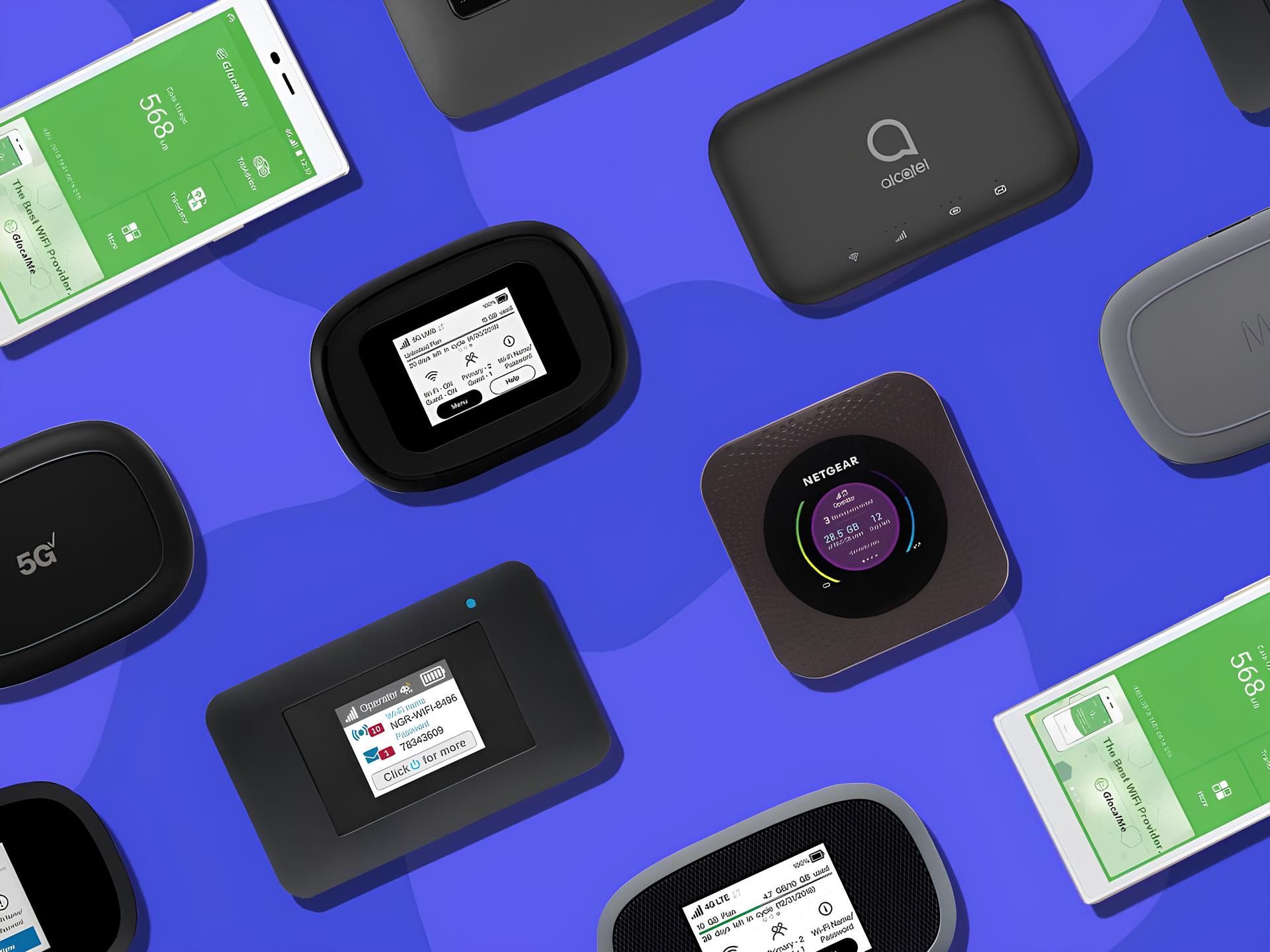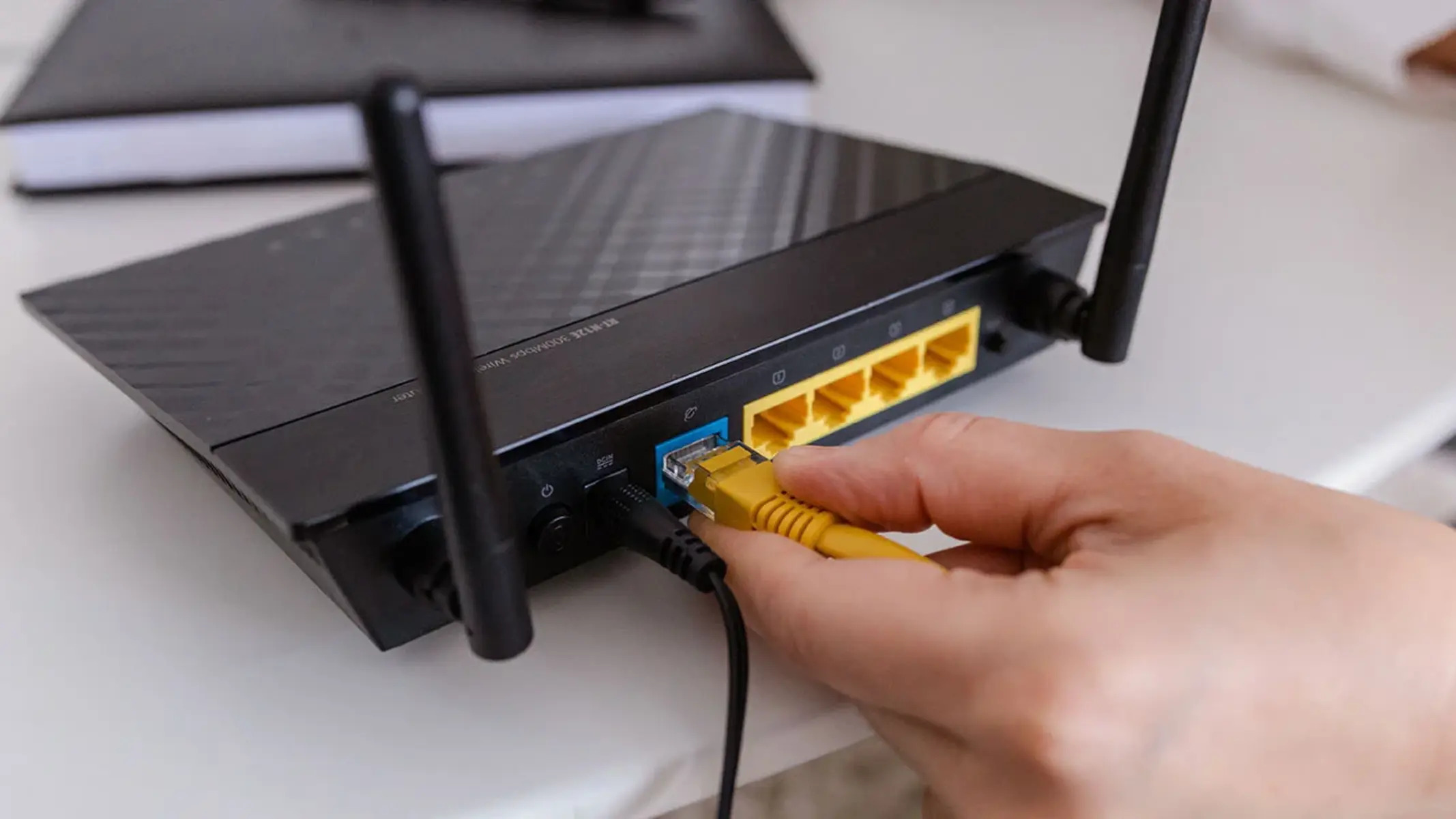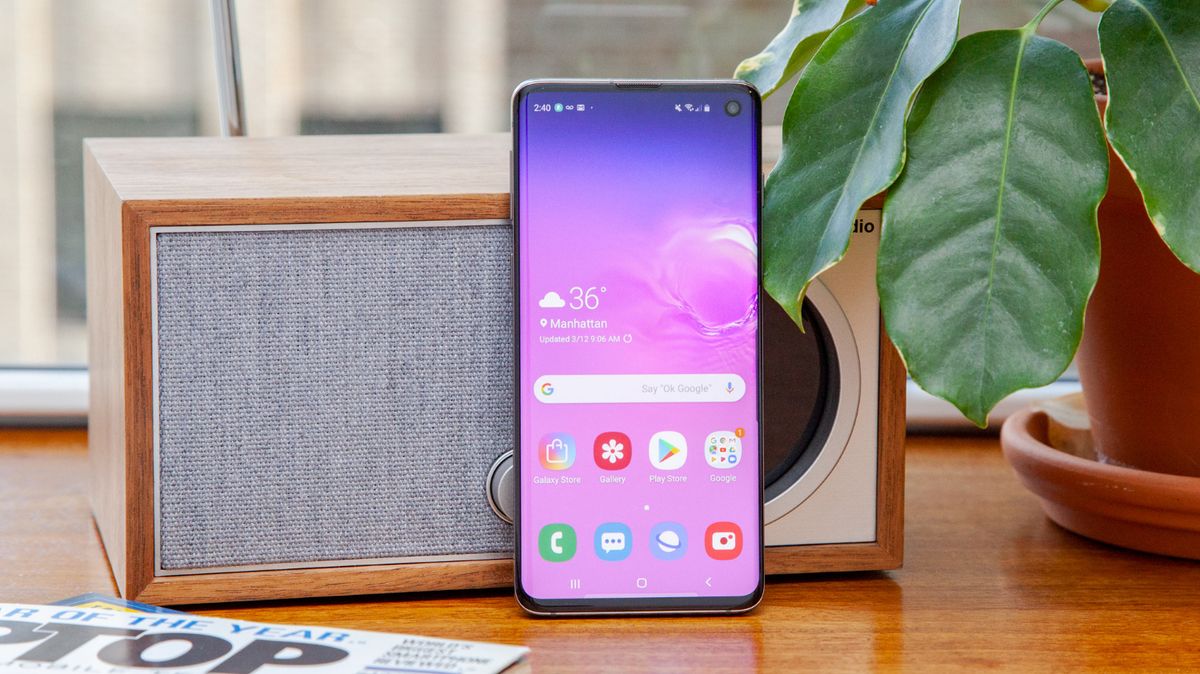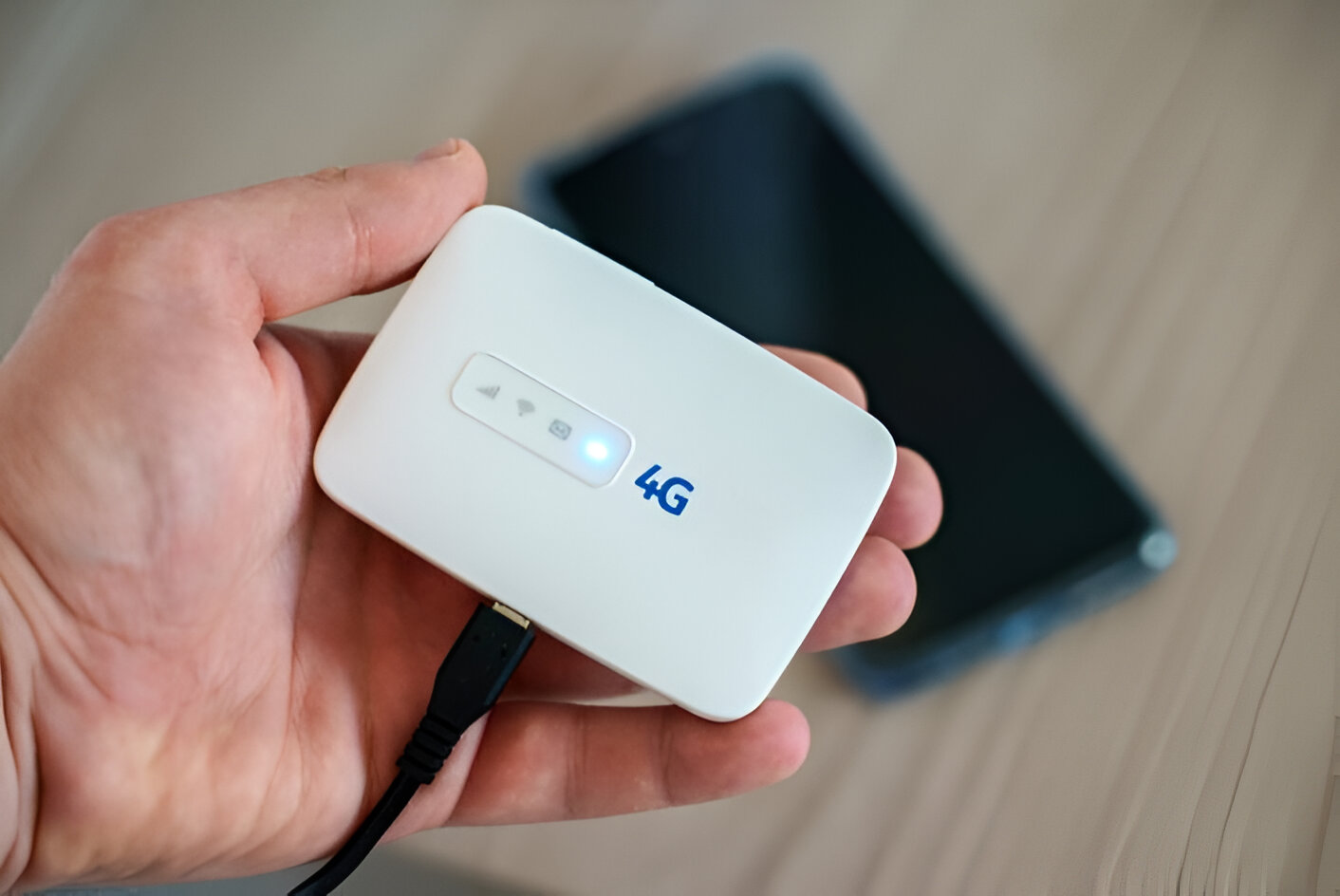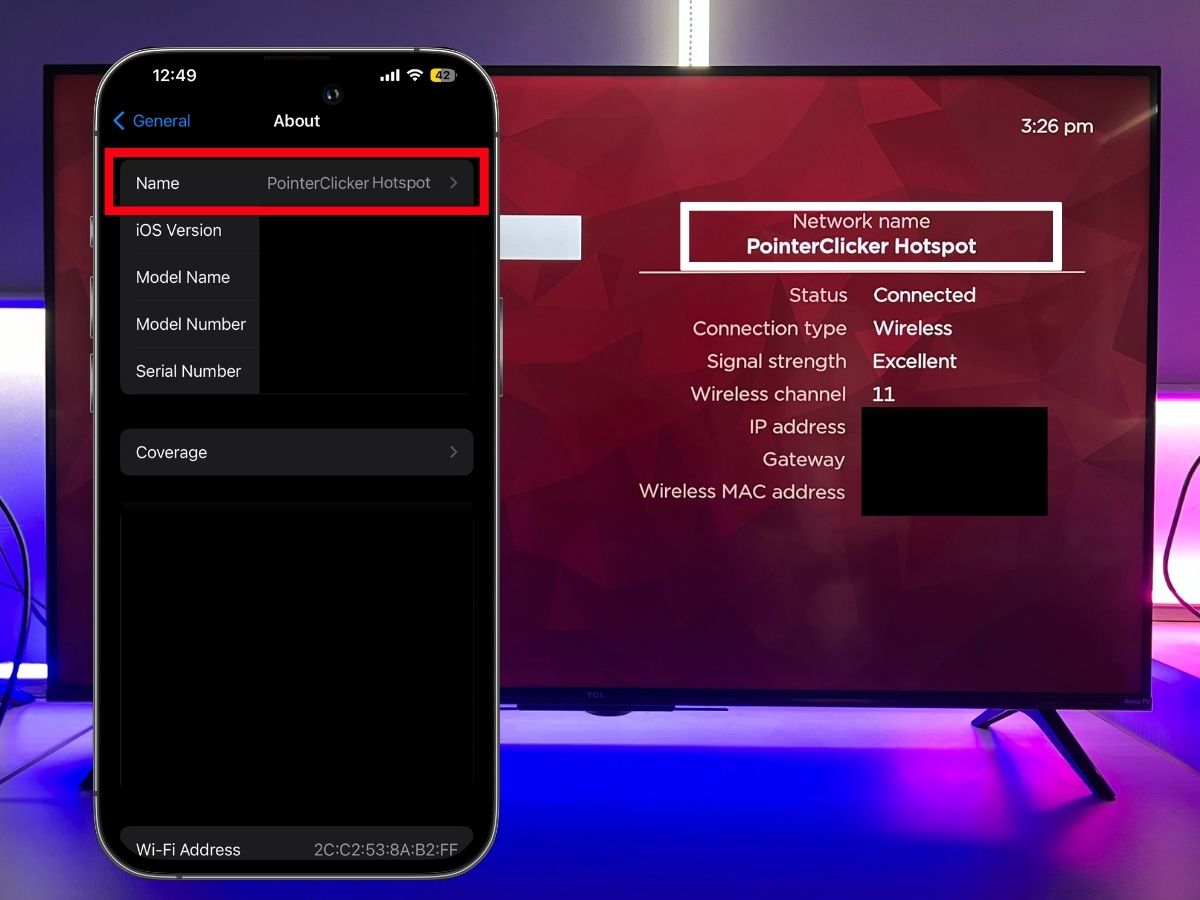Introduction
In today's fast-paced world, staying connected is more important than ever. Whether you're traveling, working remotely, or simply in need of a reliable internet connection on the go, a mobile hotspot device can be a game-changer. These compact and versatile gadgets have revolutionized the way we access the internet, offering a convenient solution for staying connected virtually anywhere.
As technology continues to advance, the demand for seamless connectivity has skyrocketed. With the rise of remote work, digital nomadism, and the increasing reliance on mobile devices, the need for reliable and high-speed internet access has become a priority for individuals and businesses alike. This is where mobile hotspot devices come into play, providing a bridge between traditional wired connections and the freedom of wireless access.
In this comprehensive guide, we will explore the world of mobile hotspot devices, shedding light on their functionality, benefits, and the top devices available in the market. Whether you're a frequent traveler, a remote worker, or simply someone who values the convenience of staying connected on the go, this guide will equip you with the knowledge to make informed decisions when it comes to choosing, setting up, and maximizing the performance of a mobile hotspot device.
Join us as we delve into the exciting realm of mobile connectivity, uncovering the potential of these innovative devices and empowering you to harness the power of seamless internet access wherever your adventures take you. Let's embark on this journey together and unlock the possibilities that mobile hotspot devices have to offer.
What is a Mobile Hotspot Device?
A mobile hotspot device, also known as a portable Wi-Fi router, is a compact and versatile gadget that enables users to create a secure and private Wi-Fi network on the go. Essentially, it functions as a bridge between a cellular data network and various Wi-Fi-enabled devices such as smartphones, laptops, tablets, and smart home devices. By leveraging cellular data connectivity, a mobile hotspot device allows users to access the internet and connect their devices to the created Wi-Fi network, regardless of their physical location.
These devices come in various forms, including standalone portable routers, USB dongles, and integrated features within smartphones. They utilize cellular data networks, such as 4G LTE or 5G, to establish a high-speed internet connection, offering users the flexibility to stay connected beyond the confines of traditional wired networks. With the ability to support multiple devices simultaneously, mobile hotspot devices have become indispensable tools for individuals and businesses seeking reliable internet connectivity while on the move.
One of the key advantages of a mobile hotspot device is its portability. Unlike traditional fixed-line internet connections, which are confined to specific locations, mobile hotspots empower users to create their own Wi-Fi networks wherever there is cellular coverage. This flexibility is particularly valuable for travelers, remote workers, outdoor enthusiasts, and anyone in need of reliable internet access in diverse settings.
Furthermore, mobile hotspot devices prioritize security and privacy, allowing users to control access to their Wi-Fi network through password protection and encryption protocols. This ensures that sensitive data transmitted over the network remains secure, mitigating the risks associated with public Wi-Fi networks and potential cyber threats.
In essence, a mobile hotspot device serves as a gateway to seamless and reliable internet connectivity, empowering users to break free from the limitations of traditional wired networks and embrace the freedom of staying connected wherever their journeys take them. With their compact size, robust connectivity, and user-friendly features, these devices have redefined the concept of on-the-go internet access, making them indispensable tools in today's hyper-connected world.
Benefits of Using a Mobile Hotspot Device
A mobile hotspot device offers a myriad of benefits, making it a valuable asset for individuals and businesses alike. Let's explore the compelling advantages that these innovative gadgets bring to the table:
-
On-the-Go Connectivity: With a mobile hotspot device, users can enjoy uninterrupted internet access while on the move. Whether traveling for business or leisure, attending outdoor events, or simply working from a remote location, the ability to create a personal Wi-Fi network ensures that connectivity is never out of reach.
-
Flexibility and Freedom: Unlike traditional fixed-line connections, mobile hotspots provide the freedom to establish internet access in diverse settings. This flexibility is particularly beneficial for digital nomads, outdoor enthusiasts, and professionals who require reliable connectivity beyond the confines of traditional office spaces.
-
Cost-Effective Solution: For individuals who frequently travel or work remotely, investing in a mobile hotspot device can be a cost-effective alternative to relying solely on public Wi-Fi networks or incurring roaming charges. By leveraging existing cellular data plans, users can avoid excessive costs associated with traditional internet access options.
-
Secure and Private Connectivity: Mobile hotspot devices prioritize security, allowing users to create a private Wi-Fi network with robust encryption protocols. This enhances data security and privacy, mitigating the risks associated with public Wi-Fi networks and potential cyber threats.
-
Multi-Device Support: Whether it's a smartphone, laptop, tablet, or smart home devices, a mobile hotspot device can support multiple Wi-Fi-enabled devices simultaneously. This versatility enables seamless connectivity for individuals who rely on multiple devices for work, entertainment, or communication.
-
Business Productivity: For businesses, mobile hotspot devices empower employees to stay productive while on the move. From field operations to remote client meetings, these devices ensure that teams can collaborate effectively and access essential resources without being tethered to a fixed location.
-
Emergency Backup: In the event of an unexpected internet outage at home or in the office, a mobile hotspot device can serve as a reliable backup solution, ensuring that essential tasks can continue without disruption.
In summary, the benefits of using a mobile hotspot device extend far beyond conventional internet access. By offering unparalleled flexibility, security, and convenience, these devices have become indispensable tools for modern-day connectivity, empowering individuals and businesses to embrace a dynamic and mobile-centric lifestyle.
Factors to Consider When Choosing a Mobile Hotspot Device
When selecting a mobile hotspot device, several key factors should be taken into account to ensure that it aligns with your specific needs and usage scenarios. Here are the essential considerations to keep in mind:
1. Network Compatibility:
Ensure that the mobile hotspot device is compatible with the cellular network(s) available in your area. Different devices support varying network technologies such as 4G LTE, 5G, and specific frequency bands. Checking network compatibility is crucial to guarantee optimal connectivity and performance.
2. Data Plans and Costs:
Evaluate the data plans offered by cellular providers for the mobile hotspot device. Consider factors such as data limits, throttling policies, and associated costs. Opt for a plan that suits your usage patterns and budget, whether it involves occasional browsing or heavy data consumption.
3. Device Portability and Battery Life:
Assess the portability and battery life of the mobile hotspot device, especially if you intend to use it while traveling or on the go. Compact, lightweight devices with long-lasting battery capabilities are ideal for seamless connectivity without being tethered to a power source.
4. Connection Speed and Performance:
Prioritize devices that offer high-speed connectivity and reliable performance. Factors such as maximum download/upload speeds, network coverage, and support for advanced technologies (e.g., carrier aggregation) can significantly impact the overall user experience.
5. Security Features:
Verify the security features integrated into the mobile hotspot device, including encryption protocols, password protection, and firewall capabilities. Robust security measures are essential for safeguarding sensitive data and ensuring a secure Wi-Fi environment.
6. Device Compatibility and Simultaneous Connections:
Consider the compatibility of the mobile hotspot device with your existing Wi-Fi-enabled devices, such as smartphones, laptops, and smart home gadgets. Additionally, assess the device's ability to support multiple simultaneous connections, accommodating the connectivity needs of multiple users or devices.
7. Additional Features and Customization:
Explore any supplementary features offered by the mobile hotspot device, such as intuitive user interfaces, customizable settings, and management options. These additional features can enhance the overall user experience and streamline the device's configuration and usage.
By carefully evaluating these factors, you can make an informed decision when choosing a mobile hotspot device that aligns with your connectivity requirements, lifestyle, and preferences. Whether it's for personal use, business operations, or emergency backup, selecting the right mobile hotspot device is a pivotal step towards unlocking seamless and reliable internet access wherever your adventures take you.
Top Mobile Hotspot Devices in the Market
When it comes to choosing a mobile hotspot device, the market offers a diverse array of options, each with its unique features and capabilities. To help you navigate through this landscape, we've curated a selection of top-tier mobile hotspot devices that have garnered acclaim for their performance, reliability, and user-friendly design.
-
Netgear Nighthawk M1: Renowned for its exceptional speed and robust connectivity, the Netgear Nighthawk M1 stands out as a powerhouse in the realm of mobile hotspots. With support for 4G LTE and advanced 5G technologies, this device delivers blazing-fast internet speeds, making it an ideal choice for users who demand high-performance connectivity on the go. Its long-lasting battery life and intuitive user interface further enhance the overall user experience, earning it a top spot in the market.
-
TP-Link M7350: Compact yet mighty, the TP-Link M7350 offers a compelling blend of portability and performance. Equipped with a vibrant LCD display for easy monitoring of data usage and signal strength, this device caters to users who prioritize convenience and real-time network management. Its sleek design, extensive network compatibility, and affordable pricing make it a popular choice for individuals seeking a reliable and user-centric mobile hotspot solution.
-
Verizon Jetpack MiFi 8800L: As a leading player in the mobile connectivity arena, the Verizon Jetpack MiFi 8800L excels in delivering seamless and secure internet access. Boasting exceptional coverage and robust security features, this device is well-suited for users who prioritize network reliability and data protection. Its ability to support multiple simultaneous connections and long-range Wi-Fi capabilities makes it a standout choice for both personal and professional use.
-
Huawei E5787: Recognized for its sleek design and impressive performance, the Huawei E5787 has garnered attention for its advanced features and user-friendly interface. With support for high-speed 4G LTE connectivity and a compact, pocket-sized form factor, this device offers a perfect blend of portability and power. Its long battery life and extensive network compatibility make it an appealing option for users who value versatility and reliable connectivity.
-
Skyroam Solis X: Embracing the concept of global connectivity, the Skyroam Solis X redefines the boundaries of mobile hotspot devices. Offering seamless access to Wi-Fi in over 130 countries, this device is tailored for international travelers, digital nomads, and individuals seeking a truly global internet solution. Its built-in virtual SIM technology and integrated power bank further elevate its appeal, positioning it as a frontrunner in the market for international connectivity needs.
These top mobile hotspot devices exemplify the innovation and versatility present in the market, catering to a wide spectrum of connectivity requirements and user preferences. Whether you prioritize speed, portability, global coverage, or advanced features, these devices offer a glimpse into the diverse landscape of mobile hotspot solutions, empowering users to stay connected with confidence and convenience.
How to Set Up and Use a Mobile Hotspot Device
Setting up and using a mobile hotspot device is a straightforward process that empowers users to create a personal Wi-Fi network and enjoy seamless internet connectivity on the go. Whether you're embarking on a journey, working remotely, or simply in need of a reliable internet solution, the following steps outline the process of setting up and utilizing a mobile hotspot device:
-
Power On the Device: Begin by powering on the mobile hotspot device. Depending on the specific model, this may involve pressing a power button or activating the device through its designated controls. Once powered on, the device initializes and prepares to establish a Wi-Fi network.
-
Access Device Settings: Access the device settings through its interface, which may be accessible via a web browser, a dedicated mobile app, or an integrated display. This allows users to configure essential parameters such as network name (SSID), password, security settings, and connection preferences.
-
Insert SIM Card (If Applicable): If the mobile hotspot device requires a SIM card for cellular connectivity, ensure that the SIM card is inserted correctly according to the device's instructions. This enables the device to establish a connection to the cellular network and provide internet access to connected devices.
-
Connect Wi-Fi-Enabled Devices: Once the mobile hotspot device is powered on and configured, Wi-Fi-enabled devices such as smartphones, laptops, or tablets can connect to the created Wi-Fi network. Locate the network name (SSID) and enter the designated password to establish a secure connection.
-
Monitor Data Usage and Signal Strength: Utilize the device's monitoring features to track data usage, signal strength, and connected devices. This allows users to stay informed about their network usage and the overall performance of the mobile hotspot device.
-
Manage Settings and Security: Take advantage of the device's settings to customize network preferences, manage connected devices, and enhance security measures. Features such as MAC address filtering, guest network capabilities, and firewall settings contribute to creating a secure and tailored Wi-Fi environment.
-
Optimize Battery Life (If Applicable): If the mobile hotspot device is battery-powered, consider optimizing its battery life by adjusting power-saving settings or utilizing external power sources such as portable chargers or power banks for extended usage.
By following these steps, users can seamlessly set up and utilize a mobile hotspot device, unlocking the potential for reliable and portable internet connectivity. Whether for work, leisure, or staying connected while traveling, the convenience and flexibility offered by mobile hotspot devices empower users to embrace a dynamic and connected lifestyle, free from the constraints of traditional wired networks.
Tips for Maximizing the Performance of a Mobile Hotspot Device
-
Optimize Placement and Signal Strength: Position the mobile hotspot device in an area with strong cellular signal reception to ensure optimal performance. Avoid obstructions and interference that may hinder signal quality, and consider using signal boosting accessories if necessary.
-
Firmware Updates: Regularly check for firmware updates for the mobile hotspot device and apply them as recommended by the manufacturer. Firmware updates often include performance enhancements, bug fixes, and security patches, contributing to a more reliable and efficient operation.
-
Data Compression and Optimization: Utilize data compression and optimization techniques on connected devices to minimize data usage while maximizing speed. This can be achieved through browser extensions, apps, or built-in device settings that prioritize data efficiency without compromising user experience.
-
Network Security Measures: Strengthen the security of the mobile hotspot device by updating the default password, enabling WPA2 encryption, and implementing MAC address filtering. These measures enhance the integrity of the Wi-Fi network and protect against unauthorized access and potential security threats.
-
Quality of Service (QoS) Settings: If the mobile hotspot device offers Quality of Service (QoS) settings, prioritize specific types of internet traffic to ensure critical applications receive sufficient bandwidth. This can enhance the performance of essential tasks such as video conferencing, file transfers, and real-time communication.
-
Battery Management: If the mobile hotspot device features a built-in battery, manage its power usage by adjusting power-saving settings and utilizing low-power modes when feasible. Additionally, consider carrying a portable charger or power bank to extend the device's operational duration, especially during extended usage periods.
-
Network Monitoring Tools: Explore the use of network monitoring tools or mobile apps that provide insights into data usage, network performance, and connected device management. These tools enable users to proactively monitor and optimize the performance of the mobile hotspot device, ensuring a seamless connectivity experience.
-
External Antennas and Accessories: Depending on the device model, consider utilizing external antennas or signal boosting accessories to enhance signal reception and coverage. These accessories can significantly improve the device's performance, especially in areas with challenging signal conditions.
By implementing these tips, users can maximize the performance and reliability of their mobile hotspot devices, ensuring a seamless and efficient internet connectivity experience across diverse usage scenarios.
Conclusion
In conclusion, the world of mobile hotspot devices offers a gateway to seamless and reliable internet connectivity, empowering individuals and businesses to embrace a dynamic and mobile-centric lifestyle. These compact and versatile gadgets have revolutionized the way we access the internet, providing a convenient solution for staying connected virtually anywhere.
The benefits of using a mobile hotspot device extend far beyond conventional internet access. From on-the-go connectivity and flexibility to cost-effective solutions and secure, private connectivity, these devices have become indispensable tools for modern-day connectivity. Whether it's for personal use, business operations, or emergency backup, mobile hotspot devices offer unparalleled flexibility, security, and convenience.
When choosing a mobile hotspot device, it's crucial to consider factors such as network compatibility, data plans and costs, device portability, connection speed and performance, security features, device compatibility, and additional features. By carefully evaluating these factors, users can make informed decisions and select devices that align with their connectivity requirements, lifestyle, and preferences.
The market offers a diverse array of top-tier mobile hotspot devices, each with unique features and capabilities. Devices such as the Netgear Nighthawk M1, TP-Link M7350, Verizon Jetpack MiFi 8800L, Huawei E5787, and Skyroam Solis X exemplify the innovation and versatility present in the market, catering to a wide spectrum of connectivity requirements and user preferences.
Setting up and using a mobile hotspot device is a straightforward process that empowers users to create a personal Wi-Fi network and enjoy seamless internet connectivity on the go. By following the outlined steps, users can seamlessly set up and utilize a mobile hotspot device, unlocking the potential for reliable and portable internet connectivity.
Furthermore, by implementing the provided tips, users can maximize the performance and reliability of their mobile hotspot devices, ensuring a seamless and efficient internet connectivity experience across diverse usage scenarios.
In essence, mobile hotspot devices have redefined the concept of on-the-go internet access, making them indispensable tools in today's hyper-connected world. With their compact size, robust connectivity, and user-friendly features, these devices have unlocked the possibilities of staying connected wherever your adventures take you.







